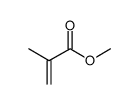poly(methyl methacrylate)

poly(methyl methacrylate) structure
|
Common Name | poly(methyl methacrylate) | ||
|---|---|---|---|---|
| CAS Number | 9011-14-7 | Molecular Weight | 100.11600 | |
| Density | 1.18 | Boiling Point | N/A | |
| Molecular Formula | C5H8O2 | Melting Point | 105ºC | |
| MSDS | Chinese USA | Flash Point | 250 °C | |
|
Colour stability of temporary restorations with different thicknesses submitted to artificial accelerated aging.
Eur. J. Prosthodont. Restor. Dent. 21(4) , 187-90, (2013) This study evaluated the colour stability of temporary prosthetic restorations with different thicknesses submitted to artificial accelerated aging. The occlusal surfaces of 40 molars were grinded to obtain flat enamel surfaces. Twenty acrylic resin specimens... |
|
|
Computed gray levels in multislice and cone-beam computed tomography.
Am. J. Orthod. Dentofacial Orthop. 144(1) , 147-55, (2013) Gray level is the range of shades of gray in the pixels, representing the x-ray attenuation coefficient that allows for tissue density assessments in computed tomography (CT). An in-vitro study was performed to investigate the relationship between computed gr... |
|
|
Hetero diels-alder chemistry for the functionalization of single-walled carbon nanotubes with cyclopentadienyl end-capped polymer strands.
Macromol. Rapid Commun. 34(8) , 672-80, (2013) Single-walled carbon nanotubes (SWCNTs) are pre-functionalized with a pyridinyl-based dithioester to undergo a hetero Diels-Alder (HDA) reaction with cyclopentadienyl end-capped poly(methyl)methacrylate (Mn = 2700 g mol(-1) , PDI = 1.14). Fourier transform in... |
|
|
Non-topography-guided photorefractive keratectomy for the correction of residual mild refractive errors after ICRS implantation and CXL in keratoconus.
J. Refract. Surg. 30(4) , 266-71, (2014) To evaluate the safety and clinical outcomes of non-topography-guided photorefractive keratectomy (PRK) for the treatment of residual mild refractive errors 6 months after sequential intracorneal ring segment (ICRS) implantation and corneal collagen cross-lin... |
|
|
Group 12 dithiocarbamate complexes: synthesis, spectral studies and their use as precursors for metal sulfides nanoparticles and nanocomposites.
Spectrochim. Acta. A. Mol. Biomol. Spectrosc. 113 , 408-14, (2013) Zn(II), Cd(II) and Hg(II) dithiocarbamate complexes have been synthesized and characterized by elemental analysis, thermogravimetric analysis, UV-Vis, FTIR, (1)H- and (13)C NMR spectroscopy. The complexes were thermolysed at 180 °C and used as single molecule... |
|
|
Direct transfer of graphene onto flexible substrates.
Proc. Natl. Acad. Sci. U. S. A. 110(44) , 17762-7, (2013) In this paper we explore the direct transfer via lamination of chemical vapor deposition graphene onto different flexible substrates. The transfer method investigated here is fast, simple, and does not require an intermediate transfer membrane, such as polyme... |
|
|
Delayed-onset complications of facial soft tissue augmentation with permanent fillers in 85 patients.
Dermatol. Surg. 39(10) , 1474-85, (2013) To evaluate factors influencing the onset and type of adverse events in patients injected with permanent fillers in the face and to propose a therapeutic strategy for these complications.A prospectively attained series of 85 patients with delayed-onset compli... |
|
|
Fabrication of ordered poly(methyl methacrylate) nanobowl arrays using SiO2 colloidal crystal templates.
J. Nanosci. Nanotechnol. 14(6) , 4622-5, (2014) A simple approach is presented for the fabrication of poly(methyl methacrylate) (PMMA) nanobowl arrays over cm2 areas using SiO2 colloidal crystal templates. SiO2 colloidal crystal templates were prepared on a clean glass substrate by self-assembled SiO2 sphe... |
|
|
Modification of Pd-Fe nanoparticles for catalytic dechlorination of 2,4-dichlorophenol.
Sci. Total Environ. 449 , 157-67, (2013) To reveal how different dispersants influence the dispersity and physicochemical properties of palladium/iron nanoparticles (Pd/Fe NPs), we modified Pd/Fe NPs with poly(methylmethacrylate) (PMMA), polyacrylic acid (PAA) and cetyltrimethylammonium bromide (CTA... |
|
|
Micropatterned culture of HepG2 spheroids using microwell chip with honeycomb-patterned polymer film.
J. Biosci. Bioeng. 118(4) , 455-60, (2014) Microwell chip culture is a promising technique for the generation of homogenous spheroids. We investigated the relationship between the structure of the bottom surface of microwell chip and the properties of HepG2 spheroid. We developed a microwell chip, the... |